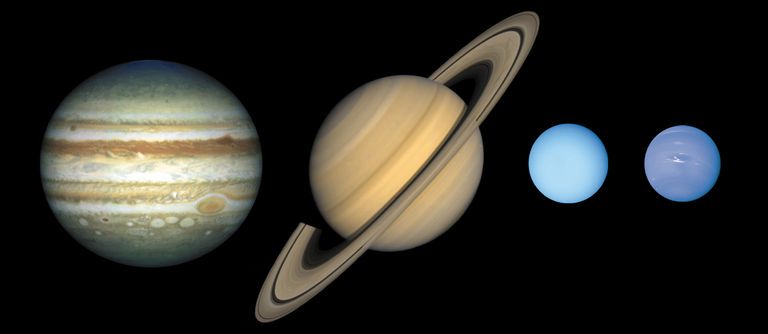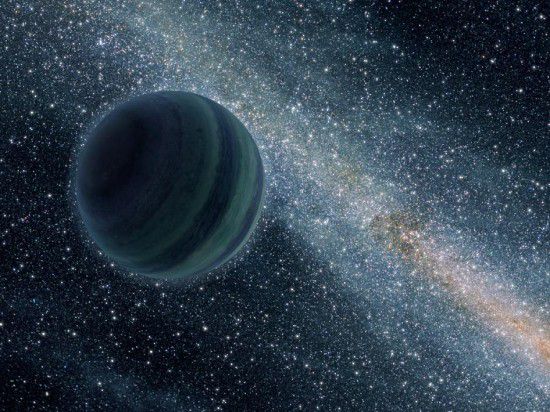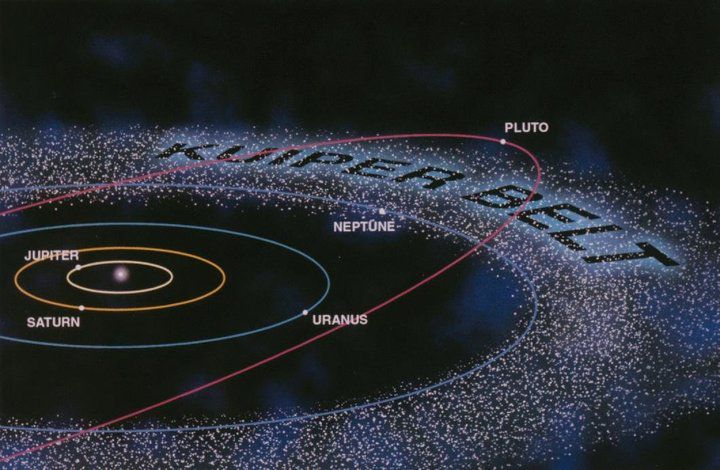Fifth Giant
Fifth Giant
This is yet another proof for a 9th planet; although, it's rather complicated and involves other interesting theories about the birth and formation of our solar system.

The current solar system has four inner rocky planets, two gas giants and two ice giants. The largest planet in our solar system is Jupiter with Saturn not far behind. The two ice giants are Uranus and Neptune. These two are called ice giants because they don't contain any where near the amount of hydrogen and helium that Jupiter and Saturn do. The two ice giants contain methane, ammonia and ice.
But there are several things wrong with the current placement of outer planets. For one thing, Neptune and Uranus have way too much mass for having been formed several billion miles from the Sun. It's obvious that they formed closer in after Jupiter and Saturn scarfed up most of the hydrogen and helium gas left over when the Sun formed. There just wasn't enough material left over in the outer solar system for Uranus and Neptune to be as big as they are.

Computer simulations also show that when Jupiter and Saturn were doing their dance within the inner solar system, they should have caused Earth and Venus to collide. Well, they didn't and we're here because of that. Obviously, the ice giants like Uranus and Neptune pulled Jupiter and Saturn out of the inner solar system. However, the computer simulation doesn't work unless there is a third ice giant involved in this cosmic billiard game.
Normally, if Jupiter were nudged out of the inner solar system by a large ice giant, it would have normally been thrown out of the solar system. It turns out that recent evidence has shown that a ninth planet at least the size of Neptune has changed the Kuiper belt structure, causing many objects out there to be in highly elliptical orbits. This ninth planet could be the third ice giant that combined with Neptune and Uranus to pull Jupiter out of the inner solar system but got tossed out to the far edge of the Kuiper belt into a very highly elliptical orbit. This action saved us. We wouldn't be here if that hadn't happened.

What could this 9th planet look like? That's a good question. If it's an ice giant like Neptune, it could be strange. Neptune is odd because it has 1500 mile per hour winds in its atmosphere. Being 3 billion miles out from the Sun, the energy from our star could not be causing these storms. Obviously, the heat is coming from Neptune's core. This suggests very high temperatures and pressures, which would break down oceans of methane and cause possible diamond rain.

Uranus is even stranger. Its rotational axis is flipped 90 degrees form most of the other planets. This is believe to have happened from glancing collisions from earth-sized planets during the early formation of the solar system. Uranus also had high winds in its atmosphere, but not as high as Neptune. This could be caused because as Uranus orbits the Sun it experiences decades of summer in one hemisphere and decades of winter in the opposite hemisphere because its rotational axis is aimed directly at the Sun.
It's hard to say for sure what a 9th planet would be like, but recent observations and computer simulations are beginning to make its existence more probable.
Thanks for reading.
Bạn đang đọc truyện trên: Truyen247.Pro